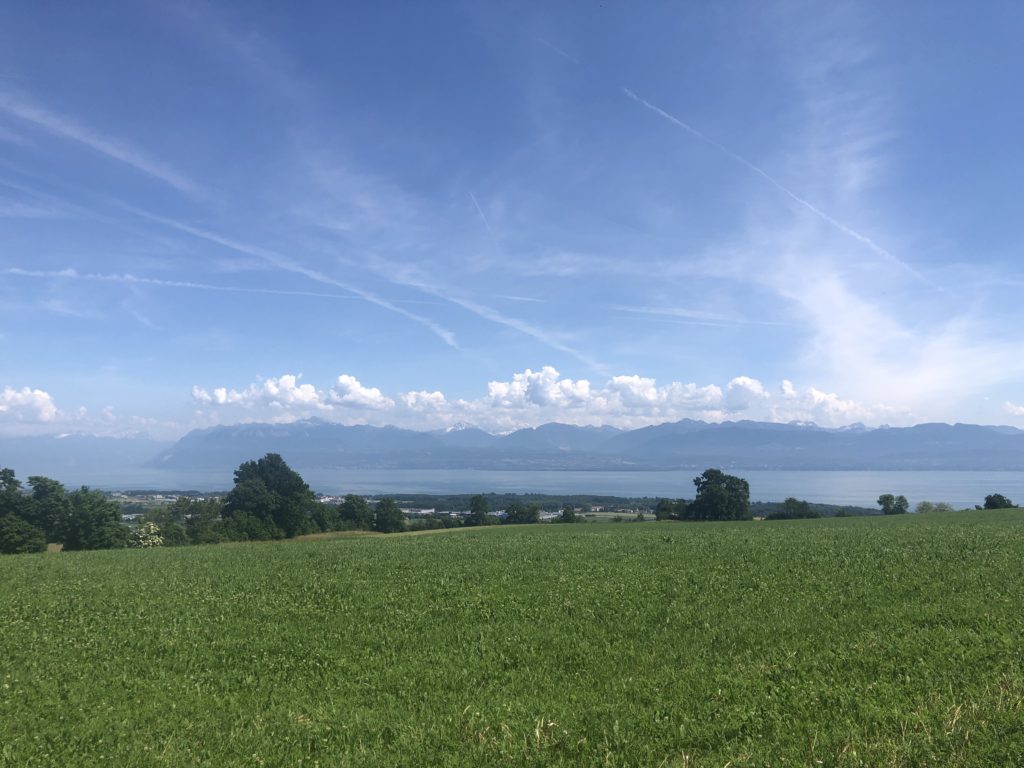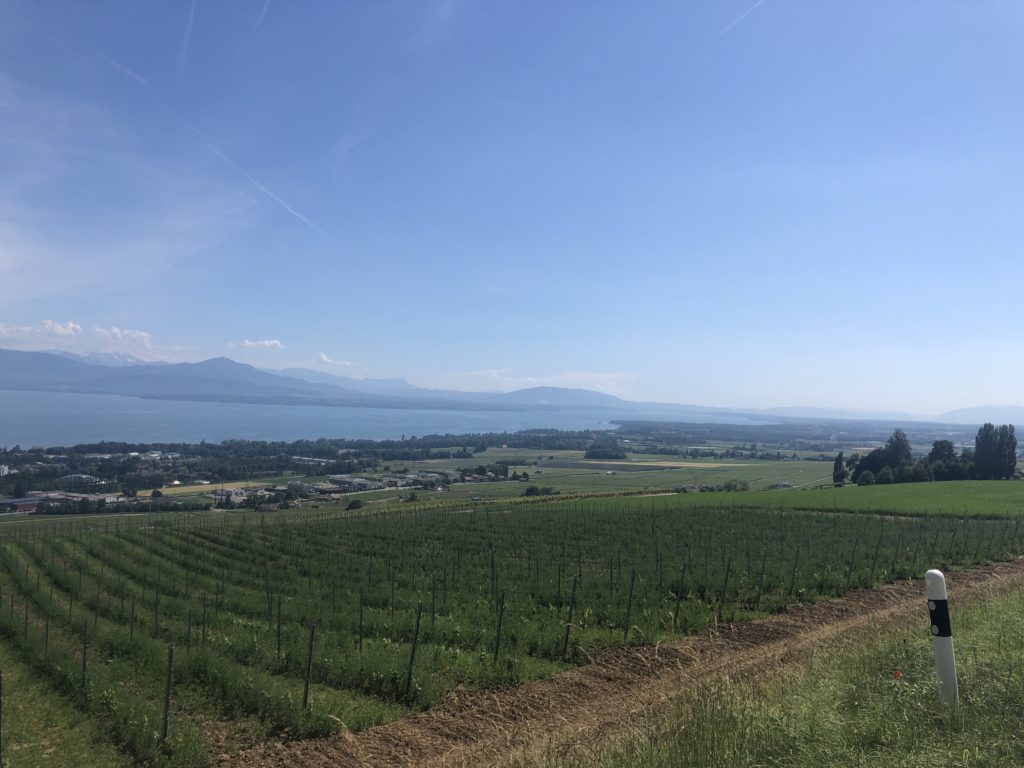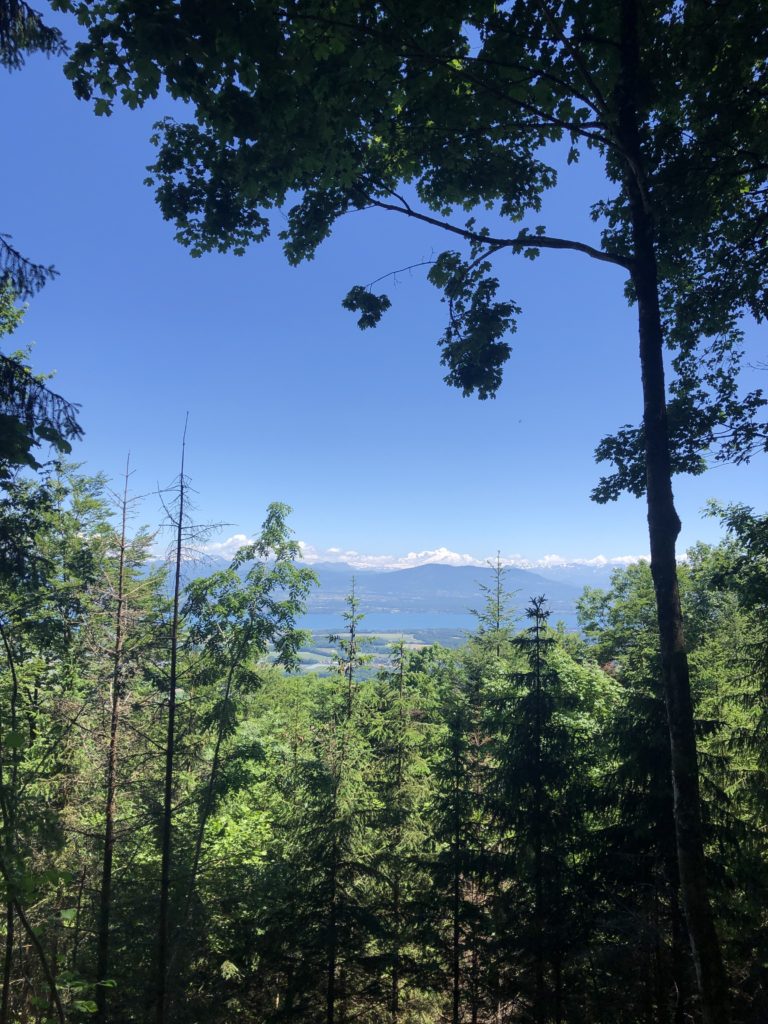The Storm Missed Me by Five Minutes
Today I saw that they were expecting a storm and I was really looking forward to a sudden downpour, lightning and more. I also thought that it would trap me at home and that I’d have a day without walking or cycling. In the end I saw that the doppler radar no longer expected any rain etc so I got ready for a bike ride and went out. I could see that the clouds over the Jura were nice and dark, threatening to become an active storm. I still continued my bike ride. I went from near Nyon to Mies, up from there towards Commugny, then towards the Versoix, up a road and had not explored yet.
During the ride I saw a few fresh roses, so I stopped to photograph and smell the roses. I didn’t see as many people walking and cycling as I would usually expect. They were wisely hiding from the rain as I should have done. I had a cycling rain coat, so if the rain had caught me I could have been slightly less drenched, and cycling clothes are not usually dry at the end of a ride anyway.
What is less fun is hail and thunder. Both of those things are dangerous. Small hailstones hurt when they hit you. I know from personal experience. Not only is hail painful, but it’s cold and it can chill you to hypothermic levels within minutes.
It didn’t hail, but it did rain and thunder, and it missed me by five minutes or less. If I had been that bit slower, my bike and I would have been soaked. As things were, the rain didn’t get me.













